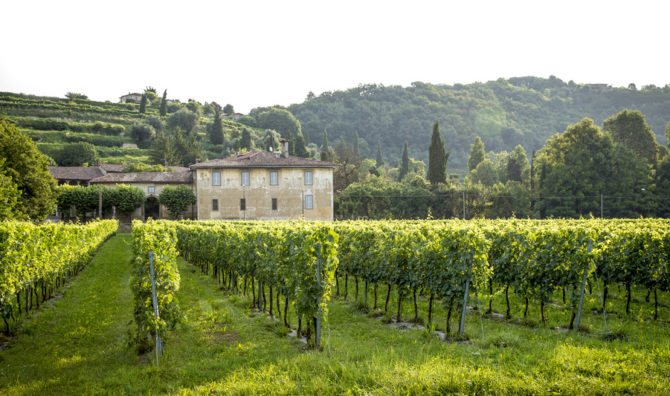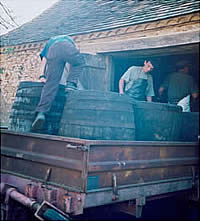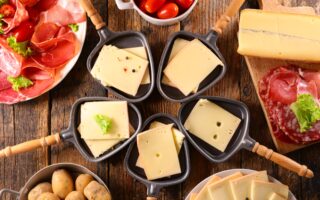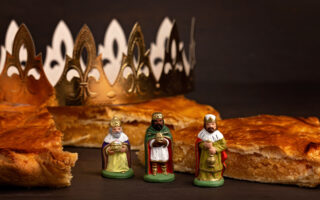The ‘Vendange’ Meals
Case Study

If anyone has done a village grape-harvest in France, you will know that it is generally a day’s work, with a meal afterwards as a ‘thank-you’. It is a wonderful occasion, as everyone works together, to get the job done as quickly as possible. People are cheerful and quietly chat together, but are eager to finish so that they can relax down to the more serious business of eating and drinking in celebration.
The vendange that I did was fantastic fun! It started with the casse-croûte breakfast (meaning ‘the breaking of a crust – of bread – among friends’), at 8am, which consisted of pâté, rillettes, dried sausage, garlic sausage, a plate of cheeses, bread and last year’s wine. Oh, and they placed bulbs of raw garlic around the table, which were delicious to have sliced up in the rillettes! When my friends and I entered the dark, dusty barn building, most of the other helpers, who were mainly male farmers, were already tucking in. We had a lovely time, and ate and drank quite a lot in the 15 minutes before it was time to get to work. We emerged, blinking, from the barn, got in the car and followed all the white Renaults and Citroens down the dusty tracks to the vinyards.
After the first couple of vineyards had been harvested, and everyone was sobering up in the sun, we all got back in our cars and drove to the next lot. Upon arrival, we were grateful for the refreshing bottles of beer that were given to us, handed down the lines of workers. The red wine at breakfast dries your mouth out makes you thirsty! From this point on (about 10:30am), there were regular beer rewards, as the sun got hotter.
It was decided that, as the harvest was going swiftly, we would not break for lunch and then continue in the vineyards afterwards, but would keep at it until we had finished. By about 2pm, we were all able to go back down to the farm, where the meal started with apéritifs in the sunny courtyard. It was quite surprising that the French farmers were willing to wait until 2 for their lunch, but I think they knew from vast experience that it would have been awful to have to continue the harvest after lunch; the heat, the amount of food consumed and the level of drunkenness would make things very tiresome.
Anyway, after a couple of drinks, everyone sauntered back into the barn, where tables had been laid with white paper tablecloths, disposable beakers, bread, red wine, plates and forks. We were, of course, expected to have our own knives with us. (I was glad that I was in the habit of carrying my Laguoile around, despite friends thinking it was slightly odd for an English gal!). As we were sitting down, massive dishes of various charcuterie were placed on each table, and the feast began.
Next came chicken-noodle soup, followed by rabbit slow-cooked in red wine. Some non-French diners thought that was the main course. They were then presented with the most superb filet steak! Slices and slices of the amazingly tender and mainly raw meat, served with cheesy potato croquettes. Mmmm. Lots of wine helped all the food down nicely, and there was a little break before the cheese course, which was the same cheese that we’d had for breakfast – the normal selection of Emmental, Camembert, Goat ‘log’ and Tomme.
A particularly good bit was when the fruit tarts were served out in huge slices. Not because of the delicious tart, but because my very English mum timidly asked the farmer’s wife for half a slice. Our host abruptly said “non” and plonked a whole slice on my mums plate!
After all that food and booze everyone needed to relax with a strong digestif. Home-made plum eau de vie (a distilled spirit) and whisky were sploshed out, while the farmer and his sons started processing the harvested grapes, using huge wooden barrels.
Eventually, the amazing meal was over, and we all went home to sleep.

Last year’s wine harvest.
Since then I have been chatting with my 83 year old neighbour about what things were like when she was a child. She has lived in this hamlet and in her house for her entire life, and the place she remembers is a different world. When she was little, there were NO machines to help with the farming, so in order to get the farming processes completed quickly enough, the whole village would work on each other’s land in turn. The family who was receiving help that day would then provide a meal for all the workers as payment. I very, very much hope that a) not all vinyards will buy a harvesting machine, and b) the small vinyards will not die out with their owners, due to a lack of youthful interest. Vive le vendange!
© Gem Driver 2004
Share to: Facebook Twitter LinkedIn Email
More in businesses, courses, family, food, renovation, villages, wine
By Gemma Driver
Leave a reply
Your email address will not be published. Required fields are marked *



